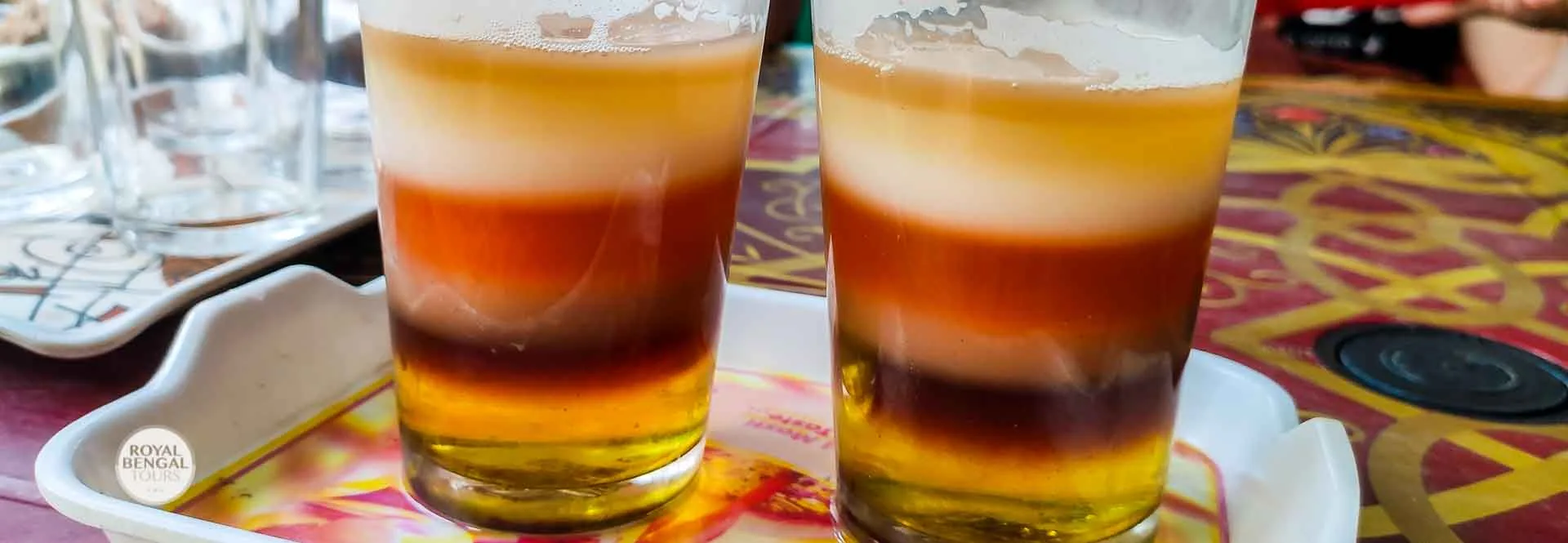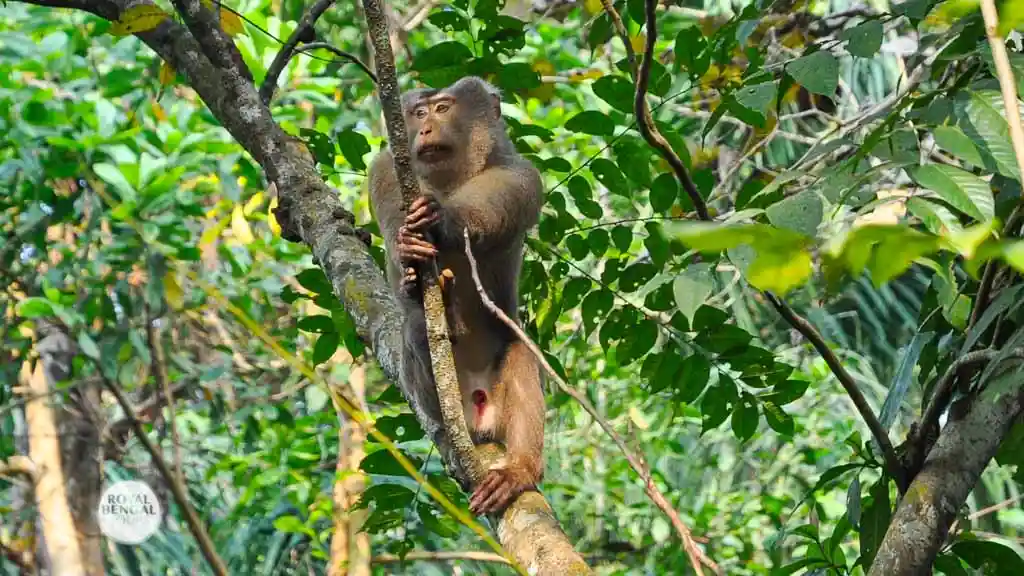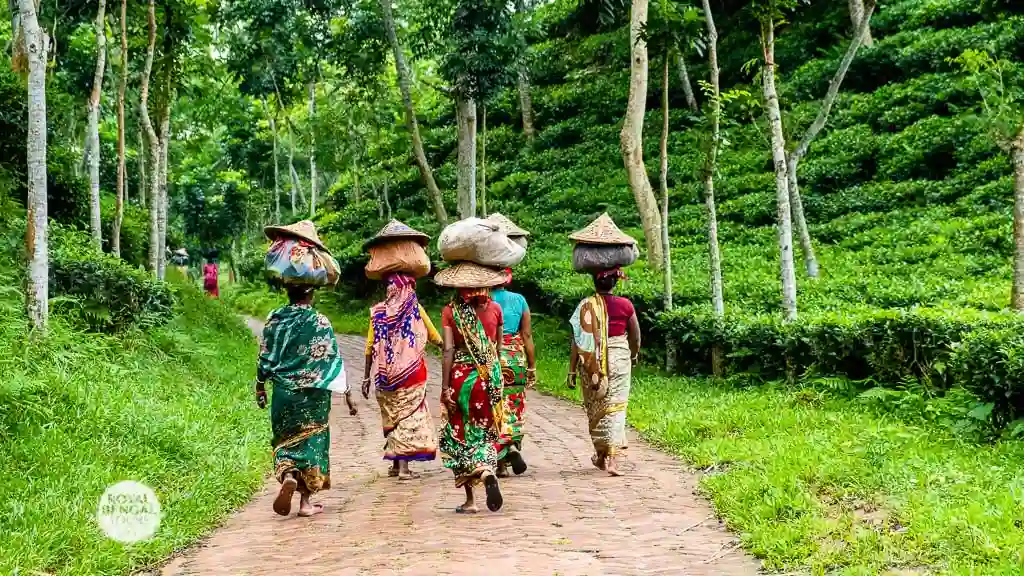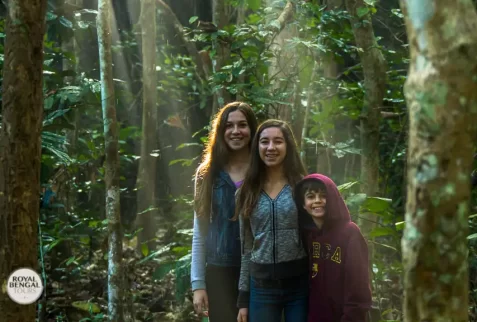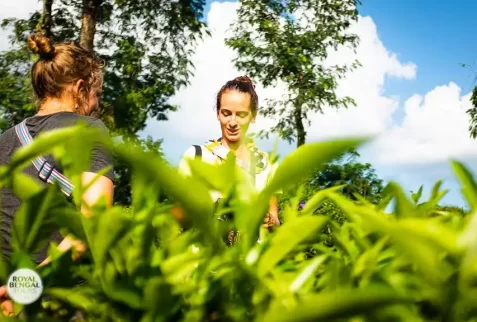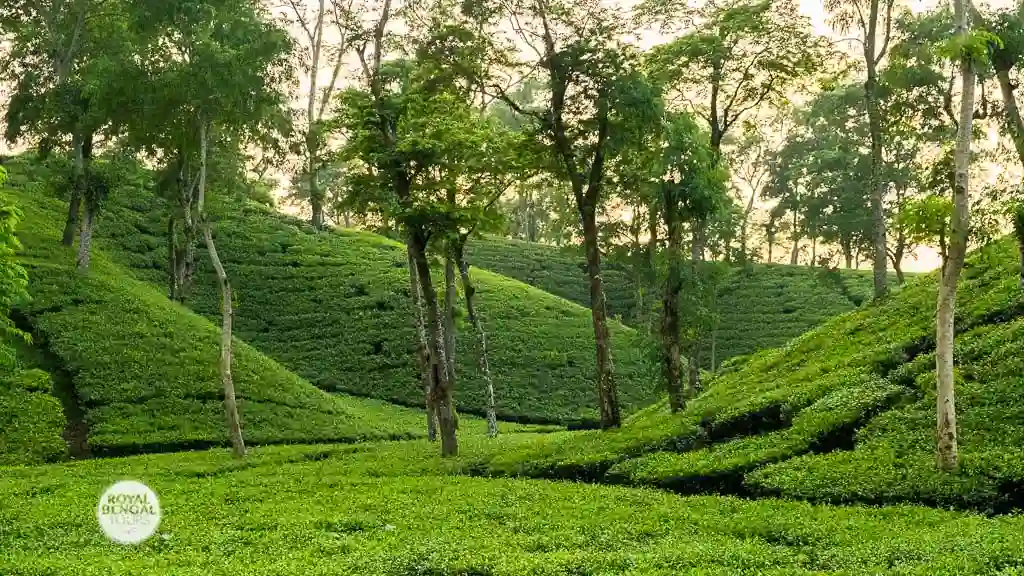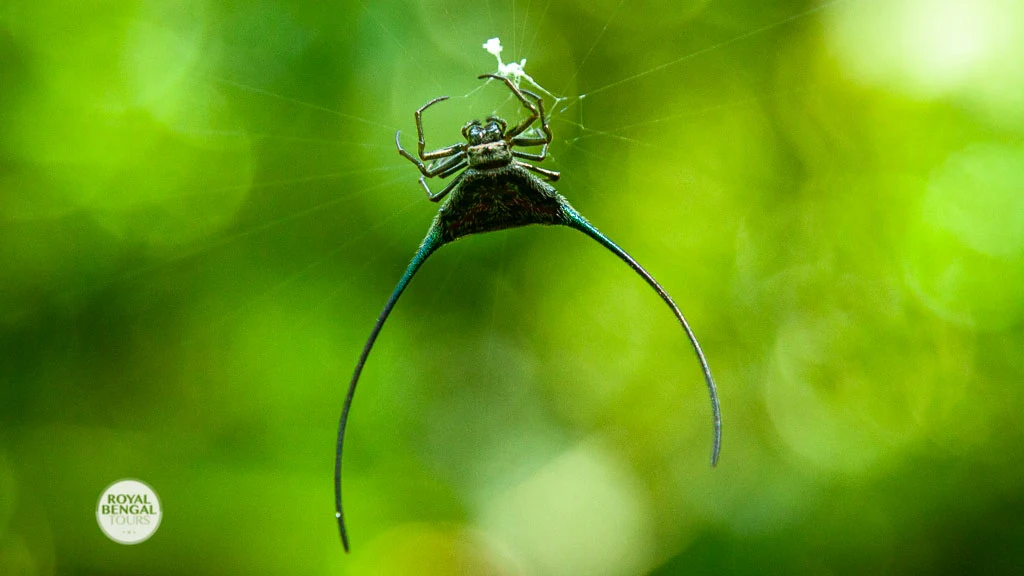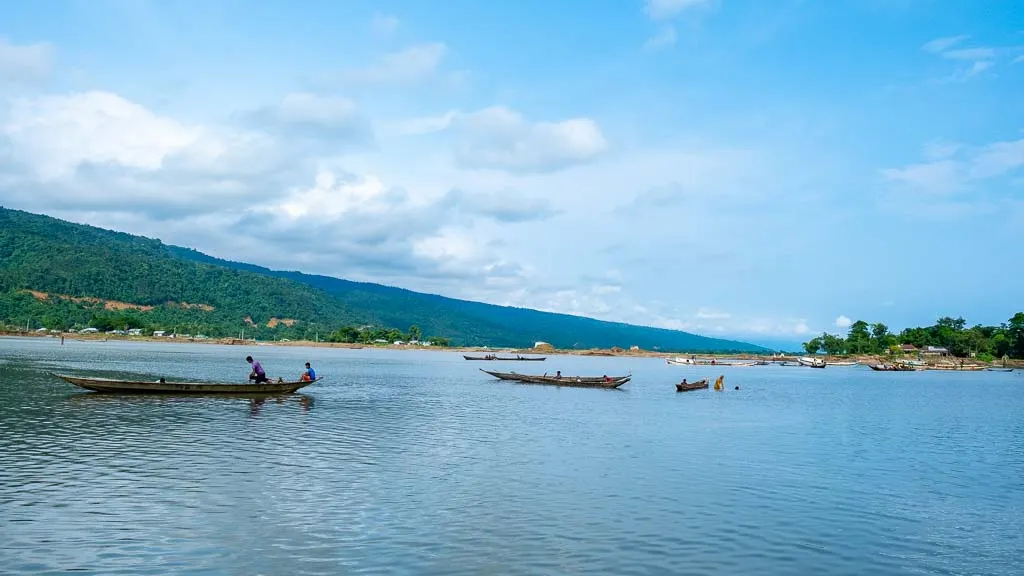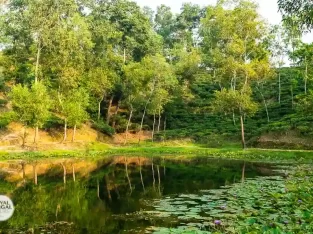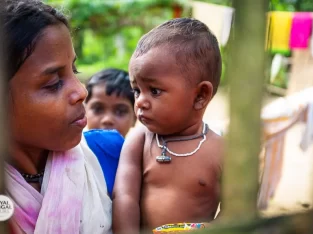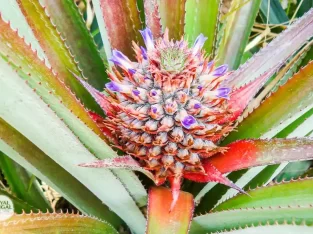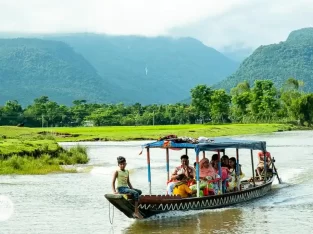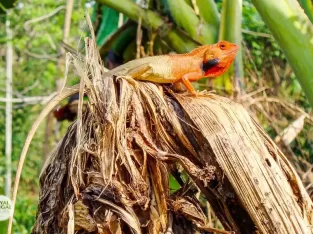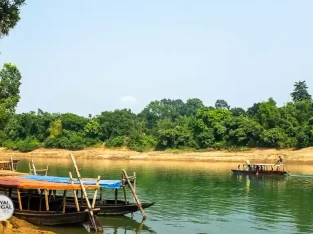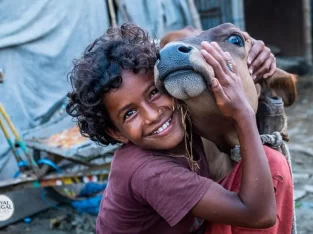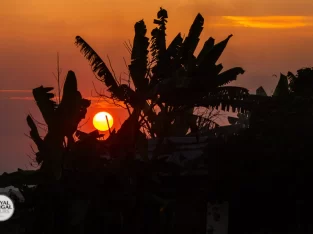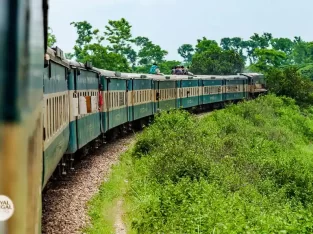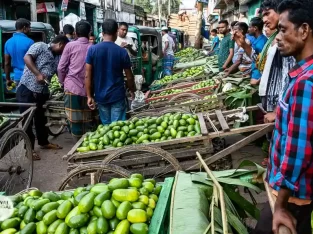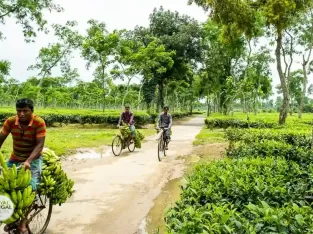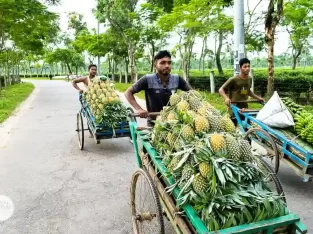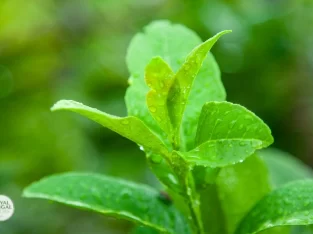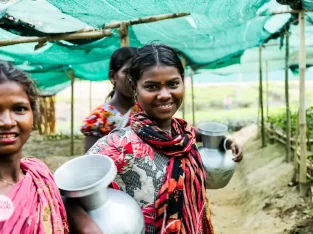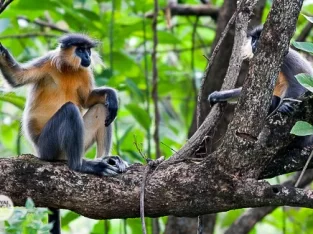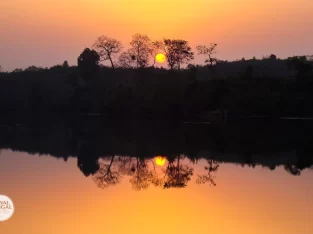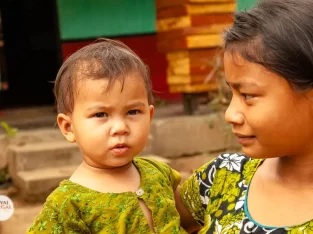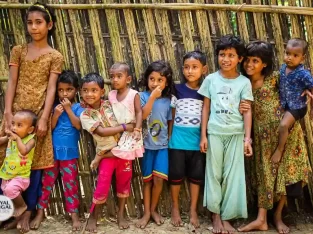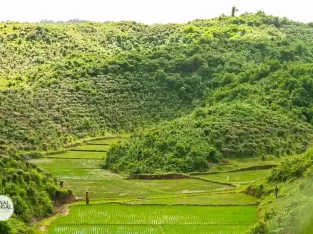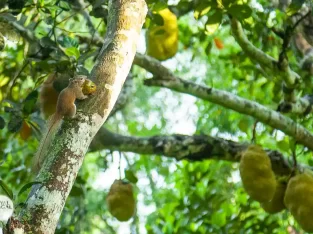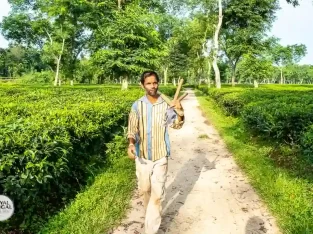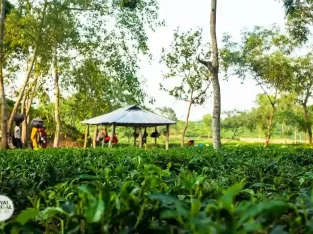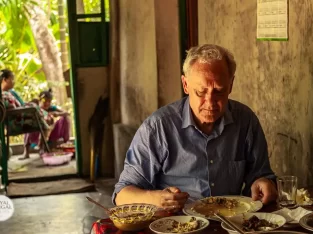Tea Estates, Tropical Forests, Birds, Wildlife, Sanctuaries of Sylhet and Srimangal.
Sylhet and Sreemangal are the northeastern regions of Bangladesh. Within a short period of time, the Sylhet-Srimangal region provides a wide range of experiences. A trip to Srimangal offers Most picturesque green hilly areas are covered by tea plantations. Cycling in Sreemangal tea estates is an incredible experience to read the fabulous geography. Exploring the tea workers' villages, local bazars, pineapple orchards, rubber plantations, hidden tribal villages, adventures in Lawachara National Park, and other tropical forest hiking activities will keep you engaged for a few days. Panoramic waterfalls, wild life and bird sanctuaries are paradise for birdwatchers and animal lovers. Country boating around the rivers, lakes, and permanent wetlands is a peaceful, quiet, and relaxing thing that anyone would expect on a relaxing holiday.
About Sylhet and Srimangal:
The Sylhet division holds the greatest variety of landscapes to explore. Sylhet and Srimongal lying in the northeastern part of Bangladesh, bordered by the Indian states of Tripura, Assam and Meghalaya. It has the Khashia and Jayanta Hills in the north and the Tora Hills in the southeast. This area produces and exports a large quantity of high-quality tea. With low rolling hills carpeted by tea plantations, scattered patches of tropical forests, lemon & pineapple cultivation & orange groves and massive wetland marshes. The variety of countryside scenery inside Sylhet remains ripe for exploration. The average rainfall in this part is higher than in the rest of Bangladesh, a fact that the British tea planters realized in the 18th century and started to cultivate tea in this part. The area has the best climate in the country: it is temperate and cool with clean, crisp, fresh air in winter and is moderately warm in summer, but has an annual rainfall of 5000mm, the highest in the country.
Other Attractions of Sylhet:
Apart from the tea plantation, there are many more to explore in this part of the country. In Sylhet town, The Holy Shrine of Hazrat Shah Jalal and Hazrat Shah Paran, the 14th-century Sufi saint, is a very important pilgrimage site for Muslims. The messianic Muslim saint is said to be one of the earliest pioneers of Islamic culture in Bangladesh, responsible for mass conversions of Bengalis from Hinduism and Buddhism. This area has a population of Khashia, Pangou, Manipuri and Tripura ethnic communities, all of whom live in villages scattered throughout the hills and practice Hinduism, Buddhism and even Christianity. Tripura, Khashi & Pangou people tend to skip regular contact with the outside world, venturing only occasionally from their settlements. Exceptional “Manipuri” people have integrated into Bangladeshi society as artisans, business people, and jewelers.
The holy shrine of Hazrat Shah Jalal:
Locally known as Hazrat Shah Jalal – er – Mazar, located in the northern part of Sylhet city, off the airport road. Lies the region’s holiest place, the Shrine of Hazrat Shah Jalal. The 14th-century Sufi saint is buried here, and this is a major pilgrimage place for Bangladeshi Muslims. Hazrat Shah Jalal’s sword and robes are preserved within the large new mosque but not on display. The tomb is covered with rich brocade, and at night the space around the tomb is illuminated with candles. Tourists visit to the Mazar is allowed with appropriate dress, long sleeves, and barefoot; female visitors should cover their head with a scarf. Visitors must be careful not to disturb anyone’s prayer.
Holly Shrine of Hazrat Shah Paran:
About 8 km east of Sylhet city, just off the highway to Jaintiapur is the Shrine of Shah Paran in the tiny village of Shahparan. This is a single-domed mosque that attracts about 2000 pilgrims a day.
Tamabil-Jaflong:
The most scenic part of the Sylhet division and a major tribal area, Tamabil is the border area with India and is located 55 km north of Sylhet, 5 km from Tamabil is Jaflong. Khashia tribes are found here. Tamabil is the border area with India and is located 55 km north of Sylhet, 5 km from Tamabil is Jaflong – the most scenic part of Sylhet division and a major tribal area. Where many Khashia tribes are found here. Jaflong is situated beside the river Mari at the top of Hill Khashia. The Mari River brings in tons of stone boulders with its tide all the way up from the great Himalayas of India. You can enjoy boating on the river Mari and see how local tourism is developing.
Srimongal:
About 75 km south of Sylhet and 150 km north east of Dhaka; is the tea capital of Bangladesh. This slightly hilly massive area covered by green carpet of tea leaves are one of the most picturesque sight. Occasionally presence of lemon orchards and pineapple plantation and the rubber plantation makes this a perfect place for a visit. Also, the tropical forests, wildlife, bird sanctuaries, water fall, lake all these are the attractions of this area. This is a perfect holiday destination to enjoy peace and quietness and tranquility.
Tea Plantations:
Srimongal is the actual tea centre in Sylhet division. The tea estates here are every bit as interesting to see, even though the terrain is not so steep and the tea itself is of lesser quality. In Sylhet division, tea begins its life as a leaf, from early April until late November; female tea pickers roam the gardens delicately plucking the leaves from the waist- high bushes. Annual production is over 55 million kg of tea from more than 150 tea estates spread over 40,000 hectares of land area.
Natural Gas Resources of Bangladesh:
This area is also very important because of the major resource of natural gas, which is now being used as environmentally friendly automobile fuel besides the industrial, kitchen and other usages of this natural gas.
Madhabkunda – Waterfall:
Madhab-Kunda waterfalls are the largest waterfall in the country, two hours northeast drive from Srimongal or 3 hours southeast drive from Sylhet. The picturesque surrounding hill forests, supporting some wildlife, are well worth visiting. You may see the elephants being used as working animal, hauling huge logs.

